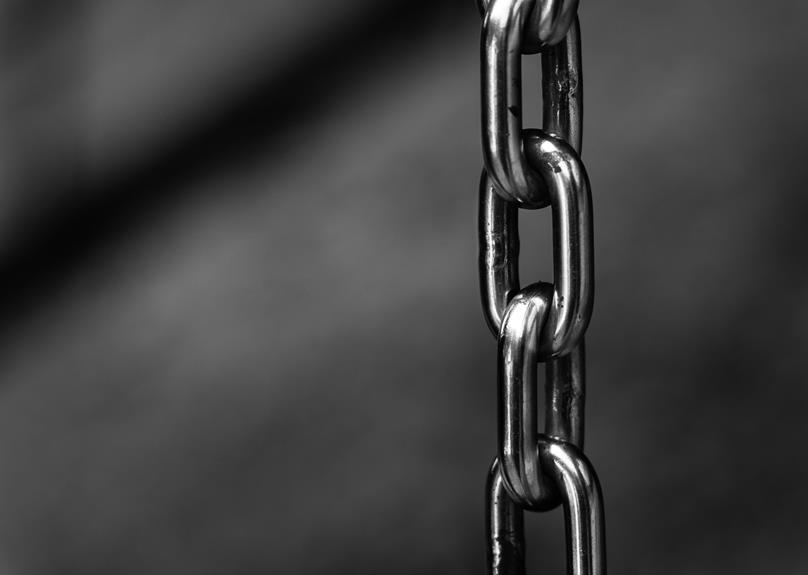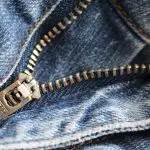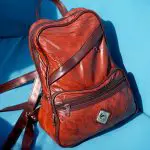Are you aware that D ring locks are one of the most widely used fabric fastening solutions, with over 70% of outdoor gear and clothing incorporating them?
This versatile fastening option offers numerous benefits, but is it truly the best choice for your fabric needs?
In this exploration, we'll delve into the advantages, applications, considerations, comparisons, installation tips, potential drawbacks, and future trends of D ring locks.
By the end, you'll have a comprehensive understanding of whether the D ring lock is the optimal fabric fastening solution for your specific requirements.
Key Takeaways
- D Ring locks offer durability and can withstand heavy loads and tough conditions.
- They are versatile and can be customized to fit specific needs.
- D Ring locks provide secure fastening in diverse settings.
- Factors to consider when using D Ring locks include strength, material durability, flexibility of fabric types, customization options, and weather resistance.
The Advantages of D Ring Locks
D Ring locks offer durability and versatility, making them a superior fabric fastening solution. Their durability ensures that they can withstand heavy loads and tough conditions, providing a reliable fastening option for a wide range of applications. This durability means that D Ring locks can be used repeatedly without fear of breakage or wear, making them a cost-effective choice in the long run.
Additionally, the versatility of D Ring locks allows for customization to fit specific needs. Whether it's adjusting the length of the fabric or accommodating different thicknesses, D Ring locks can be innovatively adapted to various requirements.
The advantages of D Ring locks lie in their innovative design, which allows for seamless integration into different products and industries. Their sturdy construction and ability to be customized make them a preferred choice for those seeking a reliable and adaptable fabric fastening solution.
Whether you're in the outdoor gear, automotive, or marine industry, the durability and customization options of D Ring locks make them a standout choice for your fastening needs.
Common Applications for D Ring Locks
D Ring locks are extremely versatile, making them suitable for a wide range of applications.
Their strength and durability make them ideal for heavy-duty use, providing a secure and adjustable solution for various fabric fastening needs.
Whether you're securing cargo, creating adjustable straps, or reinforcing fabric structures, D Ring locks offer a reliable fastening solution in diverse scenarios.
Versatility in Fastening
When considering fabric fastening solutions, you'll find that the versatility of D Ring Locks makes them suitable for a wide range of applications. Their customizable applications allow for unique fastening techniques across various industries.
In outdoor gear, D Ring Locks are commonly used in backpacks, tents, and outdoor clothing due to their strength and durability. They're also prevalent in the automotive industry, securing covers and upholstery.
Additionally, D Ring Locks are widely used in the manufacturing of pet accessories such as collars, harnesses, and leashes. Their versatility extends to the medical field, where they're utilized in orthopedic braces and medical garments.
With their ability to provide secure fastening in diverse settings, D Ring Locks continue to prove themselves as a reliable choice for a multitude of applications.
Strength for Heavy-Duty
For heavy-duty applications, D Ring Locks provide exceptional strength and reliability. These fasteners are designed to withstand heavy loads and high levels of stress, making them ideal for a wide range of heavy-duty applications.
Whether you're securing heavy equipment, industrial materials, or outdoor gear, D Ring Locks offer the load capacity needed to keep things firmly in place.
Common heavy-duty uses for D Ring Locks include securing cargo on trucks and trailers, anchoring heavy machinery, and fastening large fabric structures such as tents and canopies.
With their robust construction and high load capacity, D Ring Locks are trusted to hold up under demanding conditions, making them a top choice for professionals and enthusiasts alike in heavy-duty applications.
Secure and Adjustable Design
You can utilize the secure and adjustable design of D Ring Locks in a variety of common applications, such as fastening fabric structures and securing heavy equipment. The adjustable security and reliable fastening provided by D Ring Locks make them essential for various uses, including:
- Attaching tarps to trailers for secure transportation
- Securing outdoor furniture cushions to prevent movement
- Fastening safety harnesses for climbing and construction work
- Anchoring tents and canopies to ensure stability in outdoor settings
- Locking down cargo and equipment on trucks or boats for safe transport
These examples demonstrate the versatility and effectiveness of D Ring Locks in providing adjustable security and reliable fastening in numerous practical scenarios.
Factors to Consider When Using D Ring Locks
When using D ring locks, it's important to consider the strength they offer for heavy loads and their flexibility in accommodating different fabric types.
These factors can directly impact the performance and durability of your fastening solution.
Strength for Heavy Loads
When using D ring locks, it's essential to consider the maximum load capacity to ensure the fabric fastening solution can handle heavy loads. When evaluating the strength for heavy loads of D ring locks, take into account the following factors:
- Material durability: The material of the D ring lock should be strong and durable to withstand heavy loads without deforming or breaking.
- Weight distribution: Consider how the load will be distributed across the D ring locks to prevent strain on specific points.
- Stitching reinforcement: Ensure that the stitching attaching the D ring lock to the fabric is reinforced to withstand heavy pulling forces.
- Surface area contact: A larger surface area of the D ring lock in contact with the fabric can distribute the load more effectively.
- Load testing: It's crucial to conduct load tests to determine the maximum weight the D ring lock can handle without compromising its integrity.
Flexibility in Fabric Types
Consider the fabric's flexibility when selecting D ring locks as a fastening solution. Different fabrics have varying levels of flexibility and strength, so it's crucial to choose D ring locks that are compatible with the specific fabric you're working with.
When considering different fabric types, it's essential to look at customization options and the durability of the D ring locks. You want a solution that can withstand the unique characteristics of the fabric, providing a secure fastening without compromising the material.
Additionally, weather resistance is a key factor, especially for outdoor applications. D ring locks that offer weather resistance ensure longevity and reliability in various conditions.
Comparing D Ring Locks to Other Fastening Solutions
You should compare D ring locks to other fastening solutions before making a decision. When comparing fastening methods, consider factors such as fabric durability, ease of use, and overall security.
Here's a comparison to help you assess the best option for your needs:
- Velcro Straps: Velcro offers ease of use and adjustability, but it may not be as durable as D ring locks, especially when repeatedly fastening and unfastening fabric.
- Snap Fasteners: Snap fasteners provide a secure closure, but they can be challenging to align and fasten, making them less user-friendly compared to D ring locks.
- Buckles: Buckles offer a strong closure and are often durable, but they may not provide the same level of adjustability and ease of use as D ring locks.
- Buttons: Buttons are a classic fastening option, but they can be time-consuming to fasten and unfasten, and they may not offer the same level of security as D ring locks.
- Magnetic Snaps: Magnetic snaps are easy to fasten and unfasten, but they may not be as secure as D ring locks, especially for heavier fabrics or items.
Tips for Proper Installation of D Ring Locks
For proper installation of D ring locks, start by positioning the rings on the fabric where you want them to be secured. Use the following table as a guide for proper installation techniques and maintenance tips:
| Installation Techniques | Maintenance Tips |
|---|---|
| Ensure D rings are evenly spaced and aligned properly on the fabric. | Regularly inspect the D ring locks for any signs of wear or damage. |
| Use a fabric marker or chalk to mark the placement of the D rings before attaching them. | Clean the D ring locks with a mild detergent and a soft brush to remove any dirt or debris. |
| Sew the D rings onto the fabric using a strong and durable thread to ensure a secure attachment. | Avoid exposing the D ring locks to harsh chemicals or extreme temperatures. |
| Double stitch the D rings for added strength and stability. | Lubricate the moving parts of the D ring locks with a silicone-based lubricant to ensure smooth operation. |
| Test the strength of the D ring locks by applying pressure to ensure they can withstand the intended use. | Replace any worn or damaged D ring locks to maintain the integrity of the fastening system. |
Following these installation techniques and maintenance tips will help ensure the proper functionality and longevity of your D ring locks.
Potential Drawbacks of Using D Ring Locks
While D ring locks offer secure fastening for fabric, potential drawbacks may arise in their long-term durability and adaptability to varying fabric types. It's important to consider these potential drawbacks when deciding whether D ring locks are the best fabric fastening solution for your specific needs.
Some drawbacks to be mindful of include:
- Durability concerns: Over time, the metal components of D ring locks may be subject to wear and tear, potentially leading to reduced effectiveness in securing the fabric.
- Maintenance requirements: D ring locks may require regular maintenance to ensure optimal performance, including cleaning and lubrication to prevent rust and corrosion.
- Limited adaptability: D ring locks may not be suitable for all types of fabric, as certain textures or thicknesses may not work well with this fastening solution.
- Potential for snagging: The design of D ring locks could potentially cause snagging or tearing of delicate fabrics, especially if not installed and maintained properly.
- Weight limitations: D ring locks may not be suitable for heavy-duty fabric applications, as they may not provide sufficient strength and stability for heavier materials.
Considering these potential drawbacks alongside the benefits is essential in making an informed decision about whether D ring locks are the most suitable fabric fastening solution for your specific requirements.
Innovations and Future Trends in D Ring Lock Technology
Amidst the potential drawbacks of using D ring locks for fabric fastening, it's important to explore the latest innovations and future trends in D ring lock technology.
Future innovations in D ring lock technology are focused on enhancing durability, strength, and ease of use. One of the key advancements is the development of high-strength materials, such as advanced polymers and carbon fiber, to create D ring locks that are lighter yet exceptionally strong. These materials undergo rigorous testing to ensure they meet industry standards for reliability and performance.
Additionally, technological advancements are being utilized to improve the locking mechanisms, making them more secure and resistant to accidental openings. Some of the latest D ring lock designs incorporate quick-release features for added convenience without compromising safety.
Furthermore, there's a growing emphasis on eco-friendly materials and manufacturing processes in the development of D ring locks, aligning with the broader trend of sustainability in the textile and fastening industries.
As technology continues to evolve, D ring locks are expected to become even more resilient, versatile, and environmentally friendly, offering enhanced solutions for fabric fastening needs.
Frequently Asked Questions
How Do D Ring Locks Compare to Traditional Button or Snap Fastenings?
When comparing D ring locks to traditional button or snap fastenings, D ring locks offer a more secure and adjustable closure. They are durable and provide better support than zipper fastenings, while also outlasting Velcro closures.
Are There Any Specific Environmental Considerations When Using D Ring Locks?
When using D ring locks, consider the environmental impact. The material sourcing for D ring locks can vary, so research the options to choose a sustainable solution. Analyze the production process and choose responsibly sourced materials.
Can D Ring Locks Be Used for Heavy-Duty or Industrial Applications?
For heavy-duty applications, d ring locks can be effective, but alternative fastening methods like buckle closures or hook and loop systems are also worth considering. Each option has its own strengths and weaknesses.
What Are the Potential Long-Term Maintenance Requirements for D Ring Locks?
For long-term durability, D ring locks require minimal maintenance. Ensure material compatibility and follow the proper installation process. Regularly check for wear and tear, and lubricate moving parts as needed to keep them functioning smoothly.
Are There Any Upcoming Advancements or Developments in D Ring Lock Technology That Consumers Should Be Aware Of?
Upcoming innovations in D ring lock technology and current market trends are important to consider. Stay informed about advancements and developments to ensure you're utilizing the best fabric fastening solution for your needs.
- Can You Get Organza Wet? - April 23, 2024
- Why Is Organza so Popular? - April 23, 2024
- What Do You Wear With Organza? - April 23, 2024








